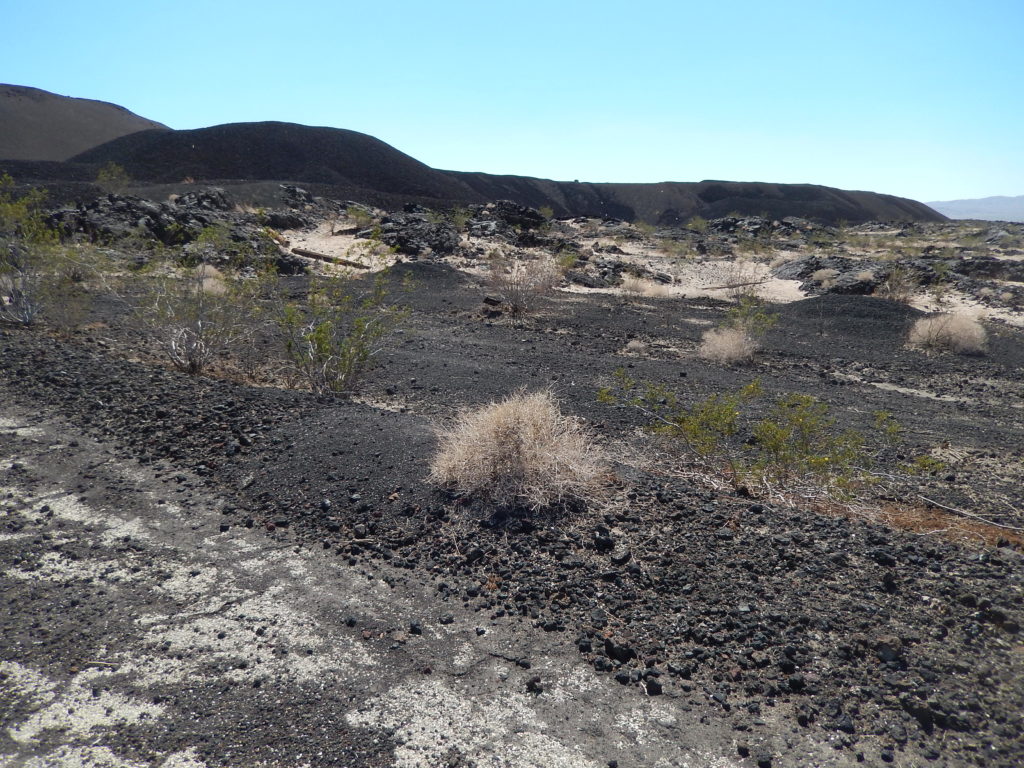Pisgah Crater or Pisgah Volcano is a volcanic cinder cone in the Mojave Desert between Barstow and Needles, California United States. Pisgah Crater is in the Craters category for San Bernardino County in the state of California. The volcanic peak is about 2.5 miles, and had a historic elevation of 2,638 feet. Although, mining activities have reduced the peak lit bit, but had a severe environmental impact.
A Canadian-based company “Can-Cal Resources Limited” presently owned the mountain and specializes in the exploration of precious minerals in California. The site of the Mount Pisgah Volcanic Cinders Mine, which produced pumice for commercial use and various cinder products, and sand was used to depict the black sands of Iwo Jima in the film Letters from Iwo Jima. Moreover, the mountain top has been removed and scoured into an irregular shape.
Due to natural erosion and mining operations, the crater has lost its original cinder cone shape. The base diameter of the Pisgah Crater is 488 meters and stands 98 meters above the surrounding high desert terrain. Furthermore, the mountain contains a large number of lava tubes, which are frequented by cavers, these lava tubes in the area are a bit popular and with no trouble accessible destination for caving.
However, no authentic data was available on when Pisgah Crater last erupted. But many geologists, believe, that Pisgah Volcano is the youngest vent of four cinder cones, and may have been active more than 2,000 years ago. Though, many others believe the last eruption could occur around 30,000 to 50,000 years ago. The volcano is basaltic, a reliable commonly used potassium-argon for dating purposes would be difficult anyway. A similar nearby Amboy Crater is interbedded with Bristol Playa sediments that are somewhere 100,000 years old.
This volcano is a very popular geology research site, not uncommon to find university classes and professional seminar groups around the mountain. Geological survey activity also occurs at the mountain every so often. Moreover, the volcano erupted at least three times, producing porphyritic basalt, and rocks from the first eruptive phase are almost aphanitic.
The lava found around the volcano consists of a’a and pahoehoe, with considerable concentrations of olivine, plagioclase, and rich amounts of gypsum that can be found coating rocks near the cinder cone. The Pisgah Lave Field is located in a valley, with the Cady Mountains (Sleeping Beauty Mountains) to the north. It looks like a lady lying on her back with her long dark hair trailing off to the east.
Therefore, the first eruption was a basaltic flow that created extensive lava fields and evidence of intrusive structures. It is believed the cinder cone was formed during this time. The second phase produced similarly extensive flows, while the third eruption produced substantial amounts of tephra.
It is believed that most of the present cinder cone consists of pyroclastic material that originated from this final eruption. Halfway up, there’s a dark hill called Sunshine Crater Cinder Cone distinctly older than Pisgah Crater, which is off-limits. Because they are within the 29 Palms Marine Base. Mount Pisgah’s name is derived from the Bible and is described as a peak on Mount Nebo.
The surface features include a driblet spire about three feet tall. There are many Caves such as “A”. However, the passage size is fairly large, and the entire cave is 100 feet in length. SPJ cave is the longest cave at Pisgah a picturesque 1500 feet, and crawling in this cave is common.
Therefore, the other caves are very short in length. One of the well-preserved features is a cast of ropy pahoehoe. The cast surface at the top is the underside of overlying lava. The layer in the middle is the initial roof stratum with remelting on its underside. Though, the bottom layer is ceiling lining with remelting on the underside.
Also Read: Aogashima A Volcanic Japan
Source: Wikipedia















